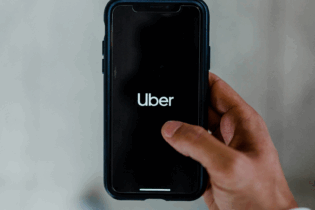The circular economy could be one way of increasing the move from informal to formal employment, writes *Peter Desmond.
Many products get thrown away when they are broken, go out of fashion, or are no longer needed. But many of these products still hold considerable value. By improving products through repairs, upgrades, remanufacturing, and remarketing, companies can keep them mechanically useful for as long as possible. True innovation is considering what happens to a product at every stage of its life cycle. An intriguing concept is product as a service. Instead of owning a product, how about leasing it, or having it as a service? In the UK, Fairphone designed a modular mobile phone, that can be taken apart and even upgraded. Fully renewable, recyclable, biodegradable materials could be used in consecutive life cycles, which can reduce costs and increase predictability and control. The idea is that everything that is considered waste can be revived from other uses. Companies either recover end-of-life products to recapture and reuse valuable material or energy components or they reclaim waste and by-products for the production process. Waste value Unilever sends zero non-hazardous waste to landfills across more than 600 sites in 70 countries. General Motors recycles 90% of its worldwide manufacturing waste and generates $1 billion in revenue annually from by-products recycling and reuse. Caterpillar saves money for itself and its customers as well as up to 90% of its energy usage by remanufacturing components each year in an organisation that employs over 4 000 people. Dell Computers takes back and resells unused products such as returns. It certifies refurbished products such as ones coming out from leasing and those which are scratched or dented. Then there is consumer goods sharing, where companies use digital technology to create new business opportunities and stronger relationships between customers, companies and micro entrepreneurs who rent, share, swap or lend their idle goods. If manufacturers and retailers bore the total cost of ownership of a product, many would focus on longevity, reliability and reusability. Consumers would lease goods and pay based on the frequency of use, meaning performance and durability come to the fore, ahead of human disposability. Michelin enables its fleet customers to lease instead of purchase outright. Selling tyres is a service where customers are paying per mile driven. Phillips is a very good example, too. It doesn’t sell lighting anymore; it sells lighting as a service, charging not for the LED diodes themselves, but for their usage. This global market could be worth more than $40 billion by 2020. Part of the change towards a circular economy relies on the role of government. Europe has the Circular Economy package – a clear strategy and funding model – which attempts to do something about the problems facing Europe. South Africa does not have a circular economy strategy yet. England, Wales, and Scotland are also without such plans, although Northern Ireland and London have their own strategies. How it’s going to happen in South Africa? What would make business and governments change? We require the involvement of academics, government, and business. Companies should look at new profit streams. You might be able to identify something within your own company. Perhaps being pressured by consumers for more sustainable products alongside the Sustainable Development Goals, published last year, will lead to more innovation. Finite resourcesThe global economy is too dependent on finite resources. Since the industrial revolution, the usage of these resources has accelerated.
A good way to understand the circular economy is to compare it to our current, predominantly linear economy, whereby we take a material out of the ground, make something out of it and then discard it. We recycle some of the materials from the product but, ultimately, it is designed for a linear system. That product will eventually come to the end of its life. The circular economy is a fundamentally different economic model. It takes the entire global economy and looks at it from a different perspective, saying, “How can we valorise our economy to a higher level, where products are designed so the materials within them can be valorised and kept at their highest utility at all times?” The problem is that commodity prices are more volatile than ever before. Between January 2011 and January 2012, the average European car manufacturer saw a raw material price increase of €500 million. That’s something they have no control over and, in order to make money, they have to buy new raw materials; they need to make and sell vehicles. Much of the current strategy to protect companies from resource volatility has centred on being more efficient. Chief executives will say, “You know our goal is to be more efficient with the way we make our products. So, we use 10% less material and 10% less energy every year to make us less exposed to those volatile prices.” But, actually, if you pan that out to ten years, does that mean that, in ten years, you make nothing with nothing and have no employment? Sure it buys you time, which of course is vital in the transition, but there is often circular activity already in a system within a business. So, someone needs to climb the first step after identifying that circularity and build on that. Renault already has remanufacturing. It is already incorporated into much of the company’s design. When you look at it holistically in a systems approach rather than the design of the car, or the remanufacturing being something separate, you suddenly end up with a system – a change that can happen through the whole business. Pipeline The role of the circular economy is not to improve what we have at the end of the pipe but, rather, through consumer engagement, to recover high-value materials from what we have in the economy today. It is going to the beginning of the pipe and building a system that can run in the long term. It’s working with businesses, regions, governments and, ultimately, individuals to build a system that provides the choice to switch to more circular models. Some interesting things to bear in mind if you’re looking at shifting your business from linear to more circular would be, “What circular activity exists within your business?” In most cases, it already exists, so it’s about building on that and communicating it throughout the business so people understand the company’s direction. Another question would be, “How resilient is your business in a world where we have more price volatility than we have ever seen before in history?” And indeed, “What is your opinion on how circularity can make you a more resilient business and which could isolate you through having those resources; having those products at a higher level of business?” Systemic change is needed within the business in which all parties are on board. It can’t be a question discussed with just the design team; it has to do with the marketing team, the financing team and everyone else within that business. People seem to understand that; they understand the reorientation of the business, they understand that it delivers more value, and that really helps people to get on board. *Peter Desmond is a management consultant and founding director at Growth International, UK.







